Search Images
Browse Content (p. 1270)
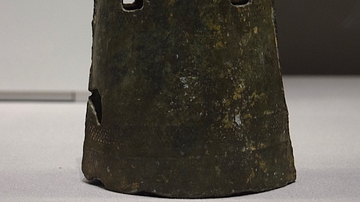
Image
Dotaku Bell, Yayio Period
A bronze dotaku bell, Yayoi Period, 4th-2nd century BCE, Japan. (Tokyo National Museum)
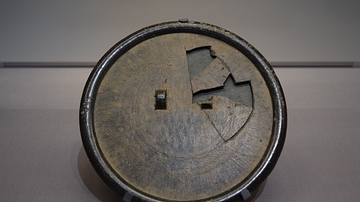
Image
Yayoi Mirror
A Korean Bronze Age fine-line geometric mirror discovered at the Yayoi Period site of Ogata, Kashiwara-shi, Osaka, Japan. This specimen dates from the 4th-1st century BCE. (Tokyo National Museum)
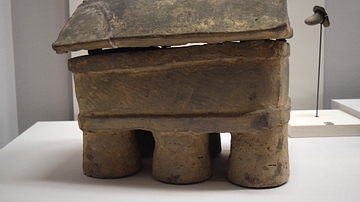
Image
Japanese Earthenware Coffin
An earthenware coffin. Kawanabe, Tsuyama-shi, Okayama, Japan. Asuka Period, 7th century CE. (Tokyo National Museum)
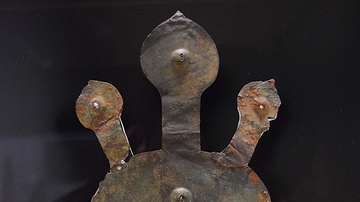
Image
Kofun Period, Gilt Bronze Crown
A gilt bronze crown. Nihon Matsuyama tumulus, Eiheiji-cho, Yoshida-gun, Fukui, Japan. Kofun Period, 5th century CE. (Tokyo National Museum)
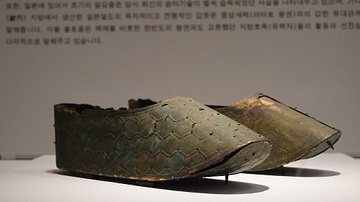
Image
Japanese Gilt Bronze Shoes
Gilt bronze shoes, most likely imports from the Korean Peninsula. Etafunayama Tumulus, Nagomi-machi, Kumamoto, Japan. Kofun Period, 5th-6th century CE. National Treasure. (Tokyo National Museum)
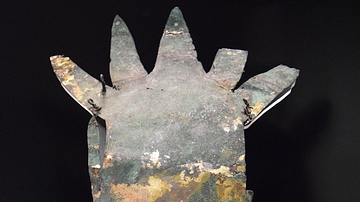
Image
Japanese Gilt Bronze Crown
A gilt bronze crown. Nihon Matsuyama Tumulus, Eiheiji-cho, Yoshida-gun, Fukui, Japan. Kofun Period, 5th century CE. (Tokyo National Museum)
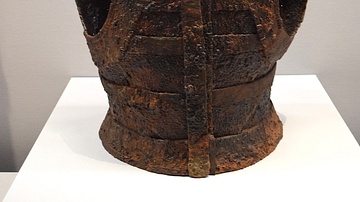
Image
Tanko Cuirass
A Japanese iron plates and leather tanko cuirass. Nagatoronishi Tumulus, Takasaki-shi,
Gunma. Kofun Period, 5th century CE. (Tokyo National Museum)
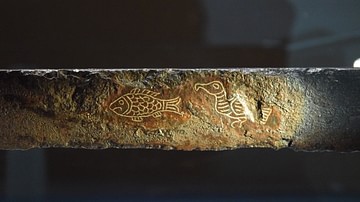
Image
Japanese Inlaid Iron Sword (Detail)
A detail of an inlaid iron sword. From Eta Funayama Tumulus, Nagomi-machi, Tamana-gun, Kumamoto, Japan. Kofun Period, 5th-6th century CE. National Treasure.
Tokyo National Museum.

Image
Warrior Sekijin
A warrior sekijin or tomb marker. Iwatoyama Tumulus, Yoshida, Fukuoka, Japan. Kofun Period, 6th century CE. Important Cultural Property. (Tokyo National Museum).
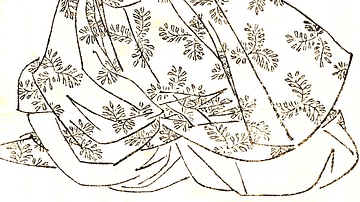
Image
Fujiwara no Yoshifusa
A depiction by artist Kikuchi Yosai of Fujiwara no Yoshifusa (804-872 CE), member of the powerful Fujiwara clan and the first Japanese regent not of royal blood.